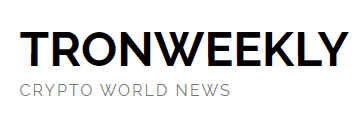You are here: Home / News / XRP Ledger’s Latest Amendments to Improve Regulatory Compliance for Issued Tokens

February 2, 2025 by Sadia Ali
- New amendments XLS-39 and XLS-73 introduce token clawback functions on the XRPL.
- These amendments aim to improve regulatory compliance for issued tokens, not affecting XRP.
- The changes enhance security for decentralized finance (DeFi) and tokenized assets.
The XRP Ledger (XRPL) recently included two significant amendments for increased compliance with regulators. First, XLS-39 introduces a feature for an issuer to include a clawback feature when issuing new coins. With a feature for a clawback, coins can be recovered in certain cases, providing added token transaction control.
2. XLS-39 was the first amendment. It allows issuers to create tokens with a built-in clawback function. Note:
>> This must be set when issued. It can’t be applied retroactively
>> It is for issued tokens, which require trustlines, meaning users are aware of their counterparty.
But a key consideration is that such a clawback feature will have to be calculated at issuance and cannot be performed in a retrospective manner. Besides, the clawback is applicable for issued tokens, and such tokens require trust lines, i.e., a user will have its counterparty when transacting with a token.
XRP Ledger’s XLS-73: Preventing Evasion in AMM Pools
The XLS-73 amendment addresses token evasion in terms of not having tokens evade clawbacks through Automated Market Maker (AMM) pools. It prohibits frozen tokens to be placed in such pools, in a manner allowing for compliance with regulating standards. Like XLS-39, XLS-73 deals with issued tokens and doesn’t impact XRP, XRPL’s native coin. With these new controls, XRP Ledger continues its commitment to security and compliance with controls in decentralized finance.
The Importance of DeFi and Tokenized Assets
Why should the financial world care about these updates? For decentralized finance (DeFi) platforms and tokenized assets, these amendments are crucial. Tokenized assets, especially stablecoins, are often centralized and require a recall ability for compliance with regulatory standards.
By opening AMM pools to a broader industry in both terms of RLUSD and RWA tokens, XLS-73 positions XRP Ledger to become a perfect platform for financial institutions to issue and manage such tokens. Not only will these updates enhance compliance protocols for centrally managed tokens, but it opens avenues for a broader financial sector to enter into a decentralized marketplace.
Although they do not impact XRP, these amendments go a long way toward strengthening XRPL’s compliance environment. By providing for token reclamation under specific scenarios and compliance in AMM pools, XRPL strengthens its appeal for financial institutions and tokenized asset issuers looking for a secure and compliant platform with which to work.
Related Reading : 7 Best Crypto Coins to Invest In Now: Expert Picks for Maximum Returns

 8 months ago
95
8 months ago
95




 English (US) ·
English (US) ·